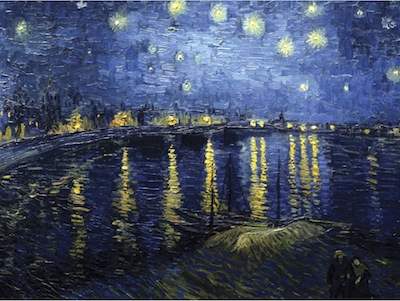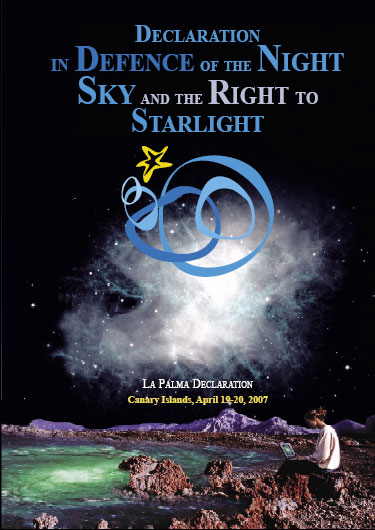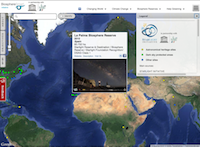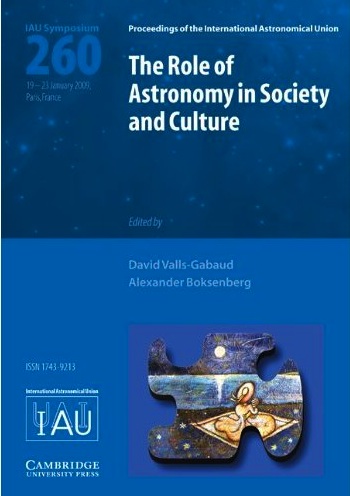Dimensión Cultural y Artística

The skies, which have been, and are, an inspiration to all humanity, are becoming obscured and even unknown to the younger generation. An essential element of our civilisation and culture is rapidly becoming lost,and this loss will affect all countries on Earth” (Declaration of the IAU/ICSU/UNESCO-1992).
Interest in astronomy, or simple contemplation of starry skies, has always had profound implications for philosophy, science, arts, culture and for the general conception of the universe in every community all over the world. Each place has its own view of starlight handed down through generations: legends, folk tales, children stories, and traditional festivals are critically endangered worldwide. A large part of the present generation are the first in history that have grown up without a direct contact with the beauty of a starry sky, in an environment where these cultural references are falling into the oblivion. Therefore, we need improving education systems, as well as dissemination and access to available information on the cultural dimension and value of the night sky. Even though astronomy is normally included in educational programmes, it is not often linked with an area’s related cultural heritage.The night sky should be kept as one of the big windows open to the inspiration and cultural enrichment of human communities, with new generations becoming their best guardians.
"We have to look back in time to discover the precise moment in history in which the notion of human development was dissociated from scientific and cultural truth and the founts from which traditional wisdom sprang to enable mankind to survive and prosper.Over the ages, observing the stars has always been one of the essential underpinnings of this wisdom. All the major civilisations and their fusion with the cosmos have to be studied to realise that none of them could do without this learning to forge their knowledge".
GLORIA LÓPEZ MORALES. President, Conservatory of Intangible Cultural Heritage of Mexico. (Starlight Conference 2007)
"Sigmund Freud speculated with the two tremendous psychological blows to mankind that were the revolutions of Copernicus and Darwin. Copernicus destroyed the powerful myth about terra firma forever when he recognised the planet within a cosmos in which it only plays a tiny and marginal role. Darwin, on the other hand, made it clear that human beings are not supreme beings and kings of the universe, but rather, the result of evolution that has left us related to the entire animal kingdom and with most of the material universe.Freud being Freud, he could not resist noting that the effects of both blows on human narcissism were also followed by another blow: psycho-analytical discoveries have revealed that we are not even the absolute masters of ourselves when managing our rationality and our freedom.Freud, a master of the existentialist pessimism of his time, realised that a growing and inevitable process of alienation of mankind had taken place with regard to both the firmament and to the Nature on earth itself; and that we were neither protected by the constellations and the heavenly gods nor were we rooted as sovereigns of planet earth.
The advances in cosmology and molecular biology now mark the path of reconciliation with our true reality as minute particles in a barely conceivable maelstrom and, at the same time, as part of a small and fragile earth that we share with a nature that we also form part of.Starlight, guide to our deepest identity. Reconciled with the universe, we can undoubtedly find ourselves with Pablo Neruda for instance, on a night of love lost, he said:
Tonight I can write the saddest lines / Write, for example, the night is starry ...
LUIS IGNACIO RAMALLO. President, Spanish National Commission for UNESCO (Starlight Conference 2007)
"Among visual artists there is a long tradition of connections among light, art, and place. The special character of the luminous environment of a place can be correlated directly with the microclimate of the place1 and thus is vulnerable to impacts of human activity on the environment. Hence a significant overlap exists between the interests of astrophysicists in starlight reserves, nocturnal landscapes, and clean skies, and parallel interests of artists in preserving the quality of both the night sky and the day sky".
DAVID MADACSI. Professor Emeritus, Department of Physics, University of Connecticut.USA (Dtarlight Conference 2007).
Links Cultural Dimension
¿BUSCANDO ESTRELLAS?


Entidad colaboradora del PORTAL DEL PATRIMONIO ASTRONÓMICO

Novedades
- Nueva publicación de la Iniciativa Starlight en asociación con UNESCO-MaB - Con el apoyo de iGuzzini
- El Parlamento de Galicia adopta la Declaración Starlight
- La Iniciativa Starlight en la 39ª Sesión del Comité del Patrimonio Mundial
- Declaración Internacional advierte sobre los riesgos de la luz blanca
- Nueva publicación de la Iniciativa Starlight en asociación con UNESCO-MaB
- El Patrimonio Astronómico - Hawaii 2015
- 2015 Año Internacional de la Luz y del diseño de iluminación
- Montsec - Destino y Reserva Starlight
Buscador Starlight
Sitios relacionados con la Iniciativa Starlight
![]()
Iniciativa Relacionada del Pacto de Alcaldes
![]()
Asociada al Grupo de Trabajo UAI
![]()
Grupo asesor de cielos oscuros IUCN
![]()
Proyecto DSA
![]()
Iniciativa asociada a UNESCO-MaB
![]()
Miembro de la Red de Conocimiento
![]()
Instituto de Astrofísica de Canarias
 |
La Iniciativa Starlight (La Luz de las Estrellas) se concibe como una acción internacional en defensa de la calidad de los cielos nocturnos y el derecho general a la observación de la estrellas, abierta a la participación de todas las instituciones y asociaciones científicas, culturales y ciudadanas relacionadas con la defensa del firmamento... |
Iniciativa asociada a: |
|
|





